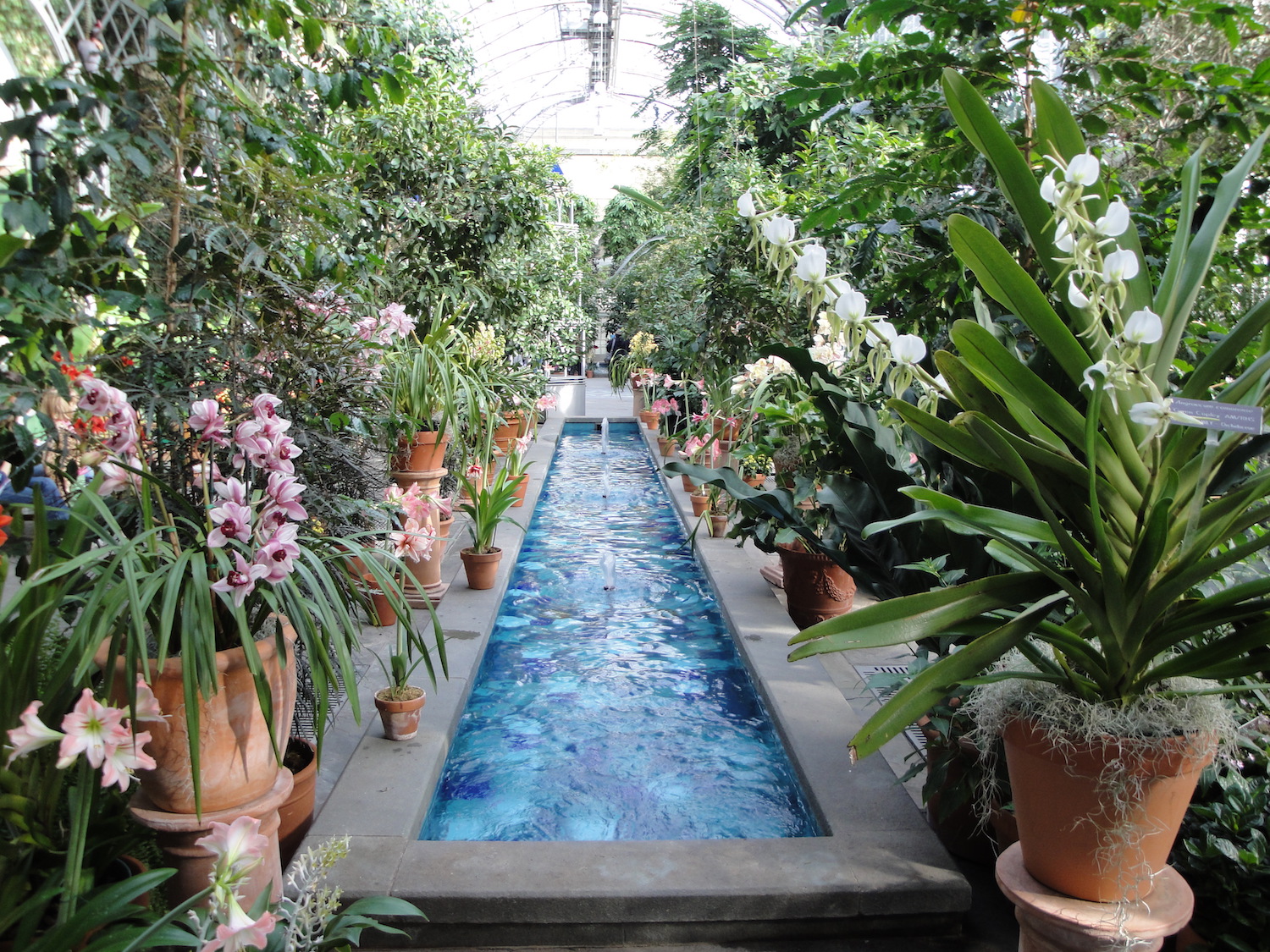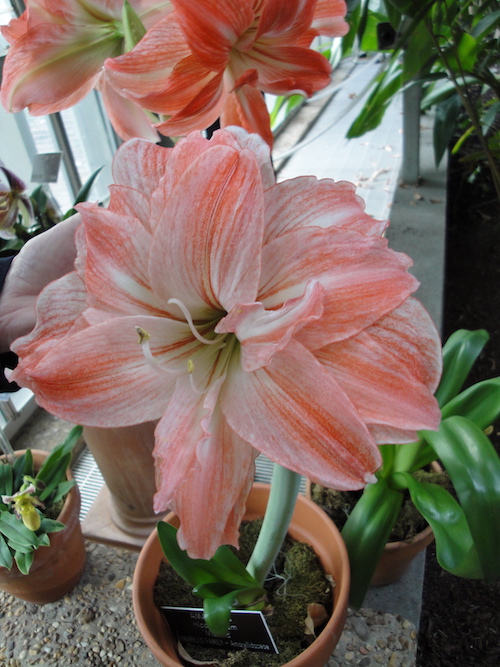Give the Founding Fathers a lot of credit: Not only did they design a pretty good system of government, they thought of an amazing number of details that would make life better down the road for U.S. citizens. One of those details was the creation of the U.S. Botanic Garden, a brainchild of George Washington, Thomas Jefferson and James Madison — all of whom had a strong interest in horticulture.
While established in the early 1800s, the garden has been open to the public since 1850 — and I got a tour of the garden this week during a visit to Washington, D.C. The weather in D.C. was nippy (and then snowy), but inside the garden it was balmy, green and blessedly humid. The U.S. botanic garden is conveniently located on the National Mall near the Smithsonian Museums, though it is run by Architect of the Capitol. (The display gardens and conservatory on the Mall are a small fraction of the USBG’s collection, most of which is housed in what our guide described as “miles of greenhouses” outside of D.C.)
The goal of the garden is to preserve unique plants. It’s also a rescue center for contraband plants confiscated at U.S. borders. And, of course, it helps educate the public about the uses of plants and the value of them. The garden conservatory is divided into a number of habitats: Rain forest, desert, and a primeval garden (a landscape from the Jurassic age) and also includes fascinating exhibits on plant adaptations, medicinal plants and rare plants as well as special exhibits.
The big orchid show opens every February. For now, the entry hall to the garden is decked out in amaryllis. There’s a lovely garden outside of the conservatory using plants from the mid-Atlantic region, and I could not help but be a little envious of D.C. residents when I saw daffodil greenery poking out of the soil in a bed near the conservatory. If you are planning a trip to the nation’s capitol anytime soon, be sure to check out the garden our founding fathers planted.


The U.S. Botanic Garden is a true gem of Washington, D.C., blending history, education, and natural beauty. It’s amazing to think that the Founding Fathers, with their love for horticulture, had the foresight to create such a lasting and educational space. A must-visit for anyone in D.C.!